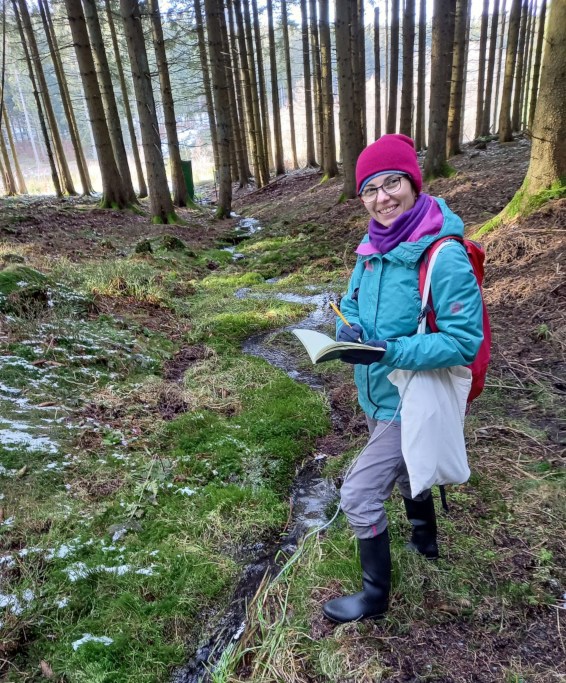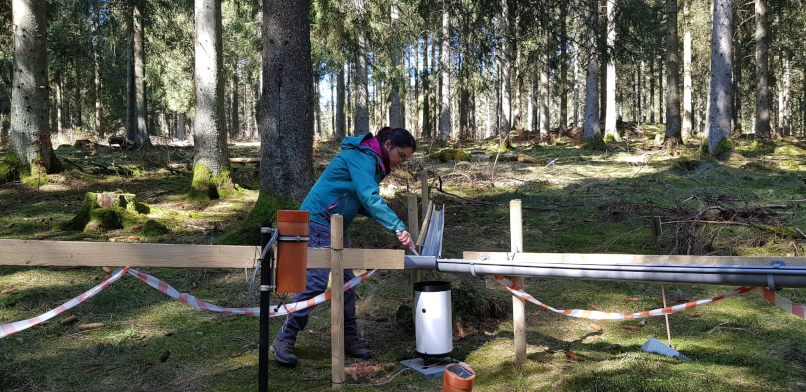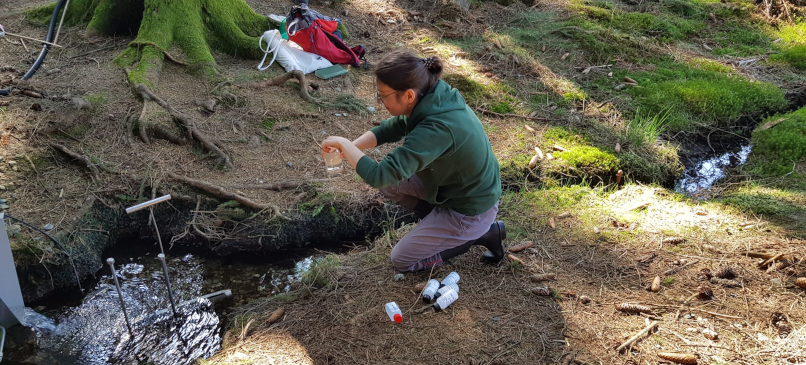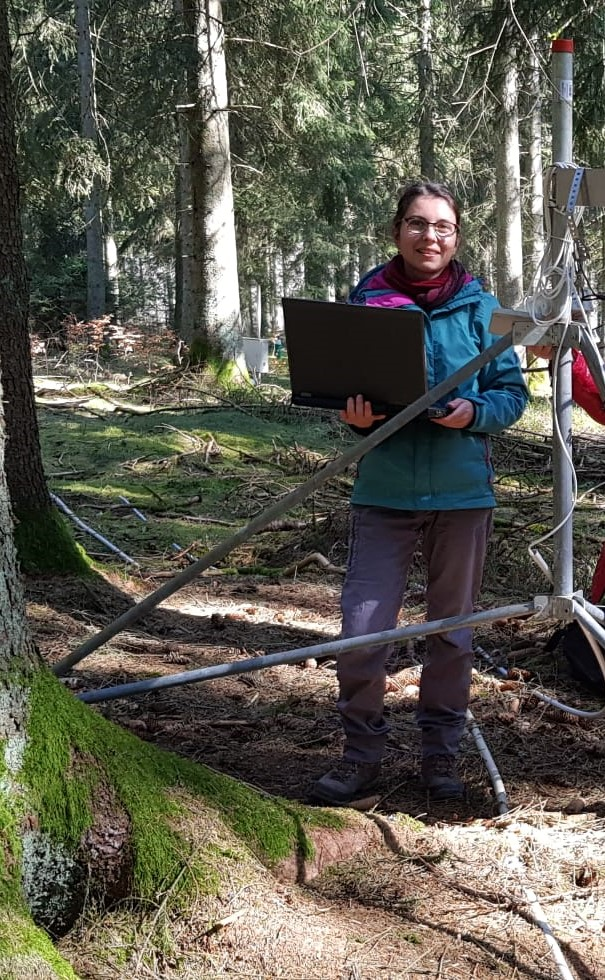Fewer ions, more dominant sodium and chlorite
Since 2020, Dr. Eliza Płaczkowska has been conducting research for her SOLUTION project at the TERENO site Wüstebach. The visiting scientist from Poland is working with Prof. Michael Leuchner at RWTH Aachen University. The project, funded by the Polish National Agency for Academic Exchange (NAWA), focuses on investigating the effects of forests and precipitation partitioning on denudation – various processes that erode Earth’s surface. In an interview, the hydrologist tells about the project’s objectives and some surprising findings she has come across.
 (Photo: Eva Haas)Mrs. Płaczkowska, what do you research?
(Photo: Eva Haas)Mrs. Płaczkowska, what do you research?
The main objective of the project is to determine how land use changes, specifically deforestation and reforestation, affect the water chemistry in a small headwater catchment. Headwaters play an important role as they serve as the origin of water, nutrients, and sediments that flow downstream. These areas are highly sensitive to any environmental changes. Given the dynamic nature of our environment, including climate change and modifications in land use and land cover, understanding the effects of such changes on surface water quantity and quality is crucial. Clean water resources are essential, for example, for drinking water and irrigation.
Why did you choose Wüstebach?
The historical context of the forest was the main reason. Following World War II, spruce trees were planted for reforestation, leading to the establishment of monoculture spruce forests, a common occurrence in various parts of Europe. Unfortunately, many spruce forests are currently facing the threat of drought-induced mortality. This issue poses a substantial problem as it not only impacts the forests themselves but also affects other components of the natural environment, including water quality. In 2013, nine hectares of spruce trees in the Wüstebach catchment were removed to facilitate the regeneration of a more natural forest ecosystem. This transformation provides an ideal opportunity to investigate the effects of land cover changes on the natural environment. Due to the long-term environmental monitoring conducted by TERENO in this area a rich set of data is available.
 Eliza Placzkowska during studies at Wüstebach catchment (Photo: Mona Ziemes)
Eliza Placzkowska during studies at Wüstebach catchment (Photo: Mona Ziemes)
Are there already first results?
We have obtained preliminary results, which, in some aspects, align with findings from other regions, but in other aspects, they differ significantly. For instance, we observed an increase in concentration of ions associated with biological activity, such as nitrate and potassium, in the stream water, which is consistent with similar studies. However, we were surprised that the concentration of other ions has decreased.
 (Photo: Mona Ziemes)What explanation do you have?
(Photo: Mona Ziemes)What explanation do you have?
During the deforestation, only the tree stems were removed, leaving the tree’s root system intact within the soil. The soil was well protected during logging works by covering harvester lanes with branches. As a result, the disturbance was minimal, and soil erosion was almost non-existent. This could potentially explain the findings. Another surprising observation was the dominance of sodium and chloride ions in the Wüstebach stream. This is consid ered unnatural since chlorides typically occur in very low concentrations in the environment.
 (Photo: Mona Ziemes)Could you clear this up?
(Photo: Mona Ziemes)Could you clear this up?
Yes, in the upper part of the catchment, an asphalt road is located just 150 meters away from the stream. During winter, this road is treated with de-icing salts, and our research revealed that these salts significantly alter the ionic composition of the stream water. It is important to note that higher concentrations of sodium and chloride are not limited to the winter season but persist throughout the year. This suggests the presence of a subsurface buildup of de-icing salts in the soil, which are then washed out with every rainfall event.
When will you be able to present your results?
The first results were published at the end of December 2022. The project will continue until the end of November this year, and the final results will be published thereafter.
Eliza Płaczkowska et al.
The Impact of Partial Deforestation on Solute Fluxes and Stream Water Ionic Composition in a Headwater Catchment.
Water 2023, 15 (1), 107.
doi: 10.3390/w15010107